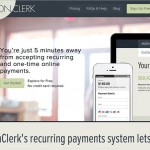
As a digital strategist, I help my clients grow their businesses through the use of digital tools, only one of which happens to be their website. On the whole, I’m looking at how their website and related tools, systems, products, and workflow support the greater ecosystem of their business.
If you’re a designer looking for new ways to bring more value to your client projects, but don’t know where to begin, here are 10 ways to get started:
1. Customer Experience Mapping
As most clients are not designers, they often haven’t planned how all of the different customer touch-points come together to create a cohesive customer experience.
- How many barriers are there to purchase?
- How many calls to action?
- How cluttered are the interfaces?
- How do customers typically move through the site?
- How do you want them to move through the site?
Help your clients design their customer’s experience by helping them identify the gaps, streamline technical pieces, and creative cohesive design elements at every touch-point. From sign-up forms and payment pages, to email confirmations and client welcome documentation, make sure that your client’s have factored in all of the pieces that often get forgotten, and contribute to the overall customer experience. Think branding, copywriting, and overall flow.
2. Customer Personas
I often challenge my clients to get really specific on their customer personas, so they don’t make claims that their audience is “20-50-yr old females who like food!” (aka, way too large a market segment).
There’s a huge difference between a 20 yr old woman and a 50 yr old woman, and making generalizations in your marketing will only make it more difficult to connect with your audience. I typically help my clients identify a primary and secondary persona, and then make strategic recommendations based on those personas.
For example, if the customer persona is not active on Facebook, I’ll recommend alternative ways to connect, some of which might even be in-person.
Do some research into your client’s audience + market segment, and help them find opportunities to connect their messaging with that audience.
3. Content Recommendations
Is the clients’ copy compelling, and speaking to one ideal persona?
Are emails consistent, and written with the brand voice and tone?
If my clients haven’t hired a copywriter, I typically dive in and make content recommendations. If you’re not savvy about content and copywriting, I highly recommend checking out some related resources:
Strengthening your copywriting skills, especially conversion-focused copywriting, will give you a huge edge over other designers.
4. Information Architecture
Often a client site can benefit from a little re-structuring of information to make things more clear. Consider making some much-needed recommendations for your clients if you spot areas where there is redundant information, confusing navigation, or unnecessary elements.
Don’t take your clients’ website structure at face value; help them thoughtfully plan the structure to reflect their goals, and get rid of the fluff!

5. Social Media Strategy
How are your clients using their social media, and what’s getting them results? More often than not, when my clients come to me, they’ve heard they should be using this or that platform, but they don’t know why, how, or when. Can you make some recommendations for your client based on their analytics?
- Where is their current traffic coming from?
- Have they tried or had success with Facebook Ads?
- What opportunities makes sense for your client based on their audience persona?
- What is the most natural way for them to connect?
While I will push my clients out of their comfort zone, I only make recommendations that make sense for my clients, and won’t recommend they use a platform if it doesn’t make sense for their personality, strengths, or how their audience wants to be reached.
You could help your client get organized with a Social Media Editorial Calendar, and introduce them to tools like Buffer, Hootesuite of Edgar to make their lives easier.
Brush up on your social know-how:
6. Systems + Processes
It’s rare that my clients have all of their systems sorted out, so I’ll often make recommendations for streamlining their workflow with better tools or technology, or even integrate technology on their behalf and provide the relevant documentation.
Some of my go-to recommendations for my clients include:
- Evernote for streamlining information capture
- Asana for Task Management
- ConvertKit (affiliate link) for Email + Subscriber Management
7. Product and Service Ideation
One thing I can’t help but do with new clients is help them identify new opportunities for services and/or products. I listen for their excitement when they describe what they do, and I try to tap into unspoken desires. Since I love—and have a speciality for—online course creation, I’ll often make suggestions to my clients for ways to turn their 1:1 services into online courses and programs.
The idea here is that you’re helping them scale their offerings in order to make more impact and income. Help your clients do that, and they won’t want to let you go!
8. Launch + Marketing Funnels
Help your clients plan the pieces of their next launch. If I know my clients are launching a new product or service, I’ll help them make a plan for their email launch sequence, and provide a list of ideas for how to market their new offering. Along the way I’ll help them identify any graphics they may require along the way, so I’m able to create them well before they need to ask in a panic.
You’d be amazed by what doors can open for you when you get a little pro-active !
Similarly, I’ll come up with ideas for custom landing pages with an incentive that sends people into an email sequence that introduces people to your offering only after they go through a free course or receive a free resource.
Check out these references if you’re looking to brush up on your marketing funnel know-how:
9. Analytics
Help your clients understand their analytics. Whether you personally take a look at their Google Analytics (and social analytics) monthly and distill some key insights and opportunities, or you help your client understand those metrics, information is power.
Give your clients the ability to make better decisions by learning from what’s working and not working for their growth and traffic.
10. Ongoing Strategy Calls
If you don’t already take on a strategic role with your clients, one way to gain experience here is to take the time to identify opportunities for your existing clients. What problems is your client experiencing? What would make their day? What broader opportunities are still untapped? Do some research and identify some opportunities for your client, and present it in a branded document. Once you’ve surprised and delighted a few of your current clients with this approach, you can present it as a paid ongoing service.
Examples of this could include:
- Ideas for translating their 1:1 services into more leveraged offerings
- Social media insights and marketing help
- Ongoing strategy planning sessions
- Email marketing ideas
- Product + Service Ideas + brainstorming
- Ongoing website performance auditing
Do you already practice some or all of the above?
Are you ready to try bringing any of the recommendations into your workflow?



Leave a Reply